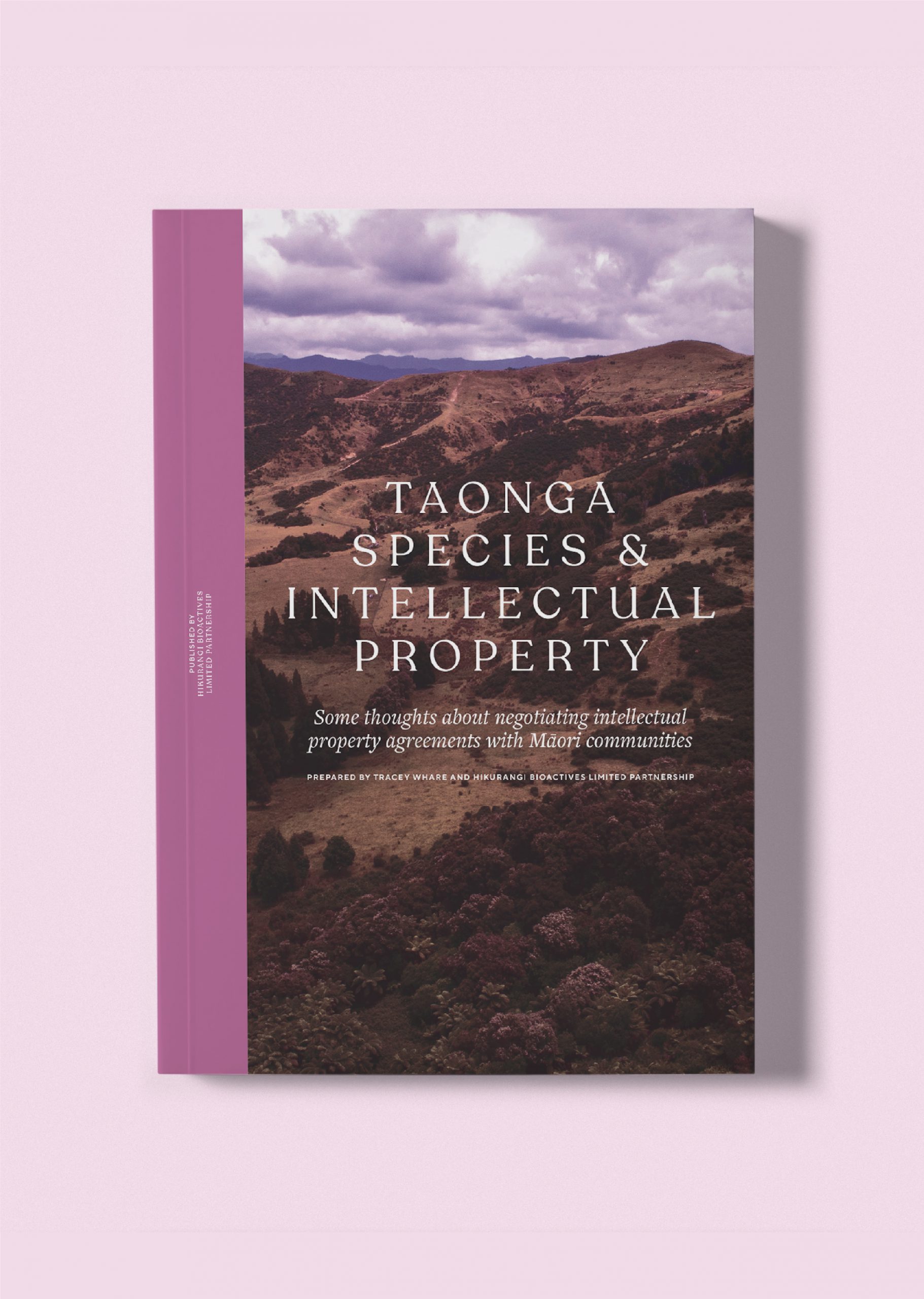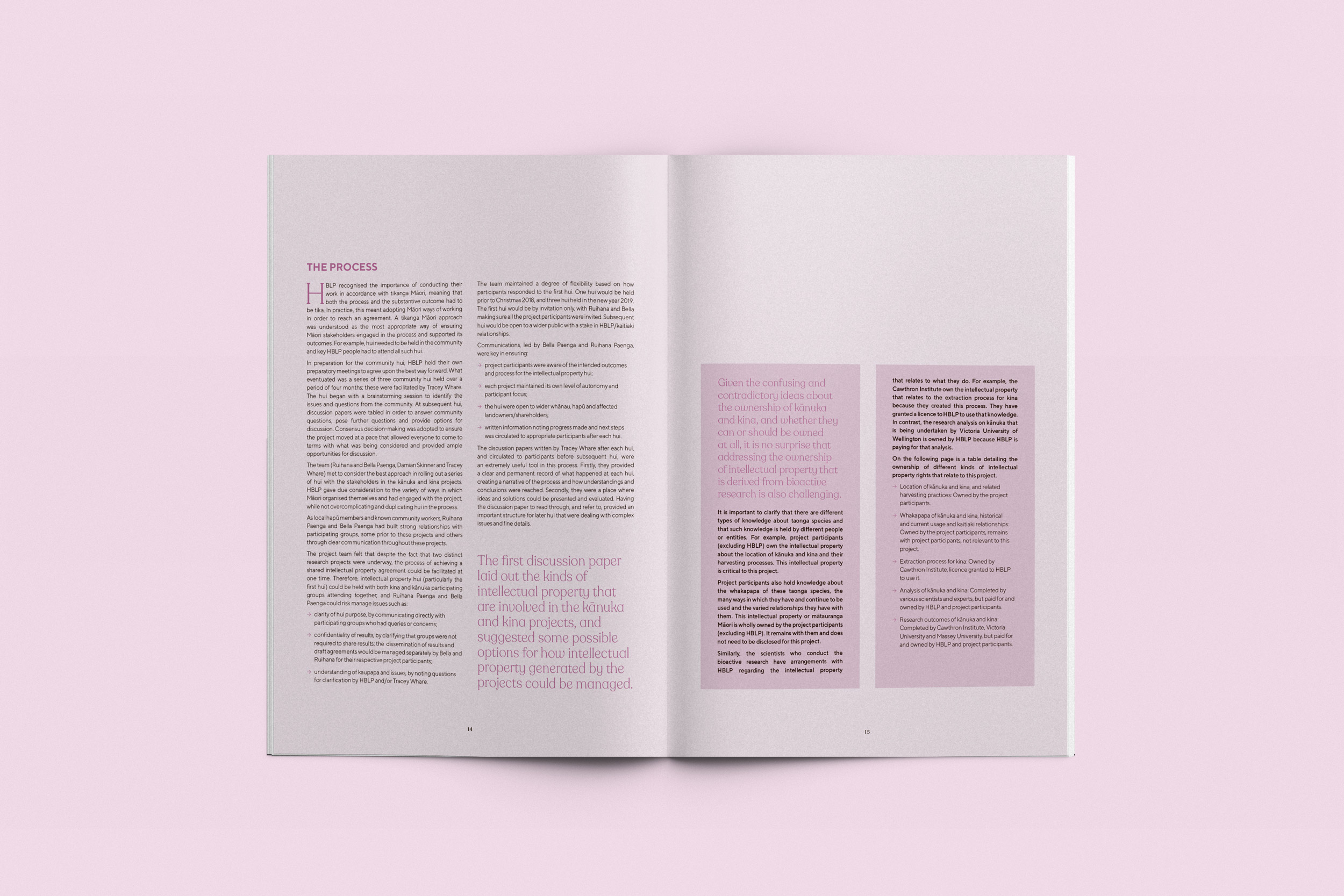

Intellectual Property Guide
Who owns native plants like kānuka? Is it the landowner on whose block it is growing? Is it Māori people more generally? Does the ownership question even matter? Is it best to focus solely on the ownership of the newly acquired scientific knowledge?
What about concepts like mātauranga Māori and kaitiakitanga? Do they relate only to traditional or historical knowledge, or can they apply to newly created knowledge made by non-Māori? Who should profit from newly created knowledge: Māori, or those responsible for its discovery?
In 2018, HBLP began thinking about what it means to negotiate an intellectual property agreement with kaitiaki of taonga species. HBLP was exploring the bioactive properties of kānuka and kina, with a view to creating natural health products that would create economic development opportunities for Māori landowners and hapū in and around the Waiapū Valley.
This Guide summarises the process that HBLP went through to negotiate an intellectual property agreement with the Māori entities who are stakeholders in the kānuka and kina projects, and who are, in this situation, the kaitiaki of these taonga species. It also introduces some general information about intellectual property and its place in state law, and the way it interacts with Māori law and international law.